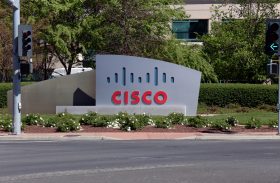Cisco VNI Update: IoT, SD-WAN, Video Drive Growth

Cisco today updated its Visual Networking Index (VNI), stating that over the next five years Internet users will grow from 3.3 billion to 4.6 billion, or 58 percent of the global population; devices and machine-to-machine (M2M) connections will grow from 17.1 billion to 27.1 billion; average broadband speeds will advance from 27.5 Mbps to 53.0 Mbps; and total global IP traffic will increase three-fold, reaching an annual run rate of 3.3 zettabytes by 2021, up from an annual run rate of 1.2 zettabytes in 2016.
Video will drive much of this growth, with video consumption growing from 73 percent to 82 percent of total IP traffic over the forecast period of 2016 to 2021.
So now, what's it all mean? The data in Cisco's VNI forecasts backs up several of the trends we've been following -- including IoT, SD-WAN, and cybersecurity.
Some key trends in the data:
Internet of Things (IoT) picks up steam. Cisco says that for the first time in the 12 years of the VNI forecast: "M2M connections that support Internet of Things (IoT) applications are calculated to be more than half of the total 27.1 billion devices and connections and will account for five percent of global IP traffic by 2021."
Cisco says applications such as connected home, connected healthcare, smart cars/transportation, and related M2M services are driving this growth, which represents a 2.4-fold increase from 5.8 billion in 2016 to 13.7 billion by 2021. Cisco says the health vertical will be the fastest growing segment (30 percent CAGR), driven by growth of health monitors, medicine dispensers, and first-responder connectivity. Connected car and smart cites will have the second-fastest growth (29 percent CAGR).
The Internet gets edgier. As networks become smarter and intelligence is pushed to devices on the edge -- a theme we've covered here -- more Internet traffic will become localized, according to the Cisco VNI. Cisco says that more than one-third of traffic will bypass the core of the Internet by 2021.
Globally, 35 percent of Internet traffic will be carried metro-to-metro by 2021, up from 22 percent in 2016, according to Cisco. Twenty-three percent of Internet traffic will be carried on regional backbones (without touching cross-country backbones) by 2021, compared to 20 percent in 2016, and 41 percent of Internet traffic will traverse cross-country backbones by 2021, compared to 58 percent in 2016.
SD-WAN is a fast-growing application. Cisco says that software-defined wide-area networking (SD-WAN) traffic will grow at a CAGR of 44 percent, compared to five percent for traditional WAN -- data that may have boosted the urgency for Cisco to recently announce its purchase of SD-WAN provider Viptela. Cisco says that SD-WAN will increase six-fold in the 2016-2021 timeframe, representing 25 percent of WAN traffic by 2021.
Distributed Denial of Service (DDoS) attacks are increasing. The Cisco VNI update says that the average DDoS attack size is increasing steadily and approaching 1.2 Gbps, which is enough to take most organizations completely offline. DDoS attacks lock down networks by flooding servers and network devices with traffic from multiple IP sources.
The peak attack size increased 60 percent year over year and represents up to 18 percent of a country's total Internet traffic while it is occurring. Average DDoS attack size increased to 22 percent, which is relatively the same rate as Internet traffic at 29 percent year over year. The number of DDoS attacks grew 172 percent in 2016 and will increase 2.5-fold to 3.1 million by 2021 globally.
Video is yuuuuge! Video will continue to eat the Internet, representing 80 percent of all Internet traffic by 2021, up from 67 percent in 2016, according to Cisco. Globally, there will be nearly 1.9 billion Internet video users -- excluding mobile-only -- by 2021, up from 1.4 billion in 2016. Cisco also says there will be three trillion Internet video minutes per month by 2021, which is five million years of video per month, or about one million video minutes every second.
Methodology Notes: Cisco says that its VNI forecast relies on analyst projections for Internet users, broadband connections, video subscribers, mobile connections, and Internet application adoption. Analyst forecasts come from SNL Kagan, Ovum, Ookla Speedtest.net, IDC, IHS, Future Source, Gartner, AMI, Strategy Analytics, Dell'Oro, Synergy, comScore, Nielsen, Media Partners Asia, Maravedis, and a variety of other sources. In addition, a number of service providers share network traffic data and trends with Cisco, and this data is used to validate and adjust the usage assumptions underlying the forecast model. You can read the full report here.
For a more detailed analysis of the Industrial IoT market, purchase our 50-page Ultimate Industrial Internet of Things (IIoT) Report, which covers a wide range of communications and cloud technologies that are being applied to businesses around the world to provide connectivity, analysis, automation, and optimization of a range of industrial applications.




















